Spud Papers – Argentina


 Issue of 1858. 5, 10, and 15 Centavos.
Issue of 1858. 5, 10, and 15 Centavos.
The set with small figures are from one drawing, with numerals only varying; the same may be said of those with large figures, of which the only emitted value was the 5 c. We know of two full sets of forgeries (both, we believe, of Hamburg birth), and a coarsely executed imitation of the 10 c., which latter may be detected, by having periods after the upper inscription and the numerals.
The large-figure stamp does not appear to have been counterfeited. For the benefit of our young friends, we may mention, in passing, that, in addition to the size of the numerals, the set with small figures has the Etruscan border larger than in the earliest 5 c. In the latter, the pattern is composed of six pieces; in the former, of four.
Genuine
The oval is well formed, touching the frame upon the left side, and slightly compressed by it upon the right. The head is exactly above the cap of liberty. The upper inscription is at some little distance from the top, and is a good deal nearer to the frame upon the left, than upon the right. Under ON there are two lines, but they are not always distinct. The rays are clear, and are evenly arched by the lettering. The 5 c. is the only value having a period after the numeral, and in some copies two are shown.
First Set of Forgeries
All from one stone. Central oval does not touch the frame upon either side; and in the Etruscan pattern, the two end pieces in the upper portion have the long line at bottom, and the upper inscription is equidistant from the frame upon both sides. The rays are in a semi-circle; thereby making the space between them, and the first and last letters of the inscription, greater than between them and the central letters. Period after numerals in the 5 Cent and 15 Cent only.
Second Set of Forgeries
5 Cent.—Central oval very badly shaped, tapering more upon the right side than upon the left, and the end upon the former side broken by the frame. Upper line of Etruscan border, on the left side, is near to the outside of frame; and the design is carried, unbroken, round both the right-hand corners. Head is not directly over the cap of liberty, but slightly to the right. The rays form a semi-circle. ON is a single line only, G in ARGENTINA has no cross-stroke, and the last A is close to the frame. Lower lettering much too small.
10 Cent.—The head is at some little distance above the oval, and the oval itself does not touch the frame on either side. Only a single line under ON. The center of the upper lettering is very close to the frame.
15 Cent.—The cap of liberty is quite unrecognizable, and the head above it is considerably to the right. Some of the upper rays upon the right side run into the frame. is only one line under ON, and the center of the upper inscription is very near to the border.
1867. 5, 10 & 15 Centavos.
There are two types of each of these stamps, but it will not be necessary to confuse the reader with the details of the different types. I shall take merely these points of general variation between the genuine and the forgeries which can be easily seen and detected.
Genuine
Lithographed, on soft, slightly surfaced, finely-wove paper. Top of cap of liberty droops well over to the right. Hands clasping pole moderately distinct, E and N of CENTAVOS almost touch each other. Number of pearls in circle varies, according to type, from 71 to 78. O of CENTAVOS the same size as the other letters. Postmark is a long narrow oval, with lettering.
N.B. Most of the unused copies now offered for sale are reprints.
Forged
Lithographed on coarsely-wove paper. Cap of liberty resembles a bundle of flax on a distaff more than anything else. Droop of top hardly perceptible. Considerable space between E and N of CENTAVOS; and the O in the same word is much smaller than the other letters. All the values have 81 pearls in circle. There are two parallel wavy lines to represent the hands and arms of the originals. Postmark of parallel bars. These forgeries are really very fairly done; and, I think, may be classed as dangerous. Of course the concoctions, having only lithographs to deal with, have had fewer difficulties to overcome.
From “The Spud Papers” by Atless, Pemberton & Earée, 1871-1881.
![]() For more information about the classical issues of Argentina, see —> René Jacobsohn’s exhibition
For more information about the classical issues of Argentina, see —> René Jacobsohn’s exhibition
See also –> Album Weeds – Argentina

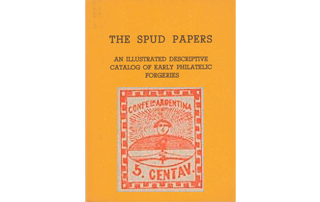
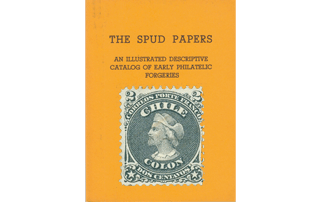
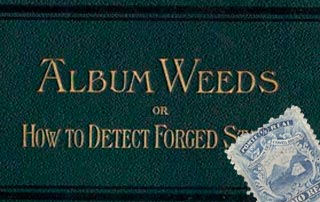
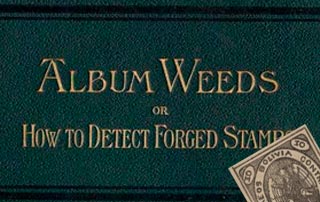
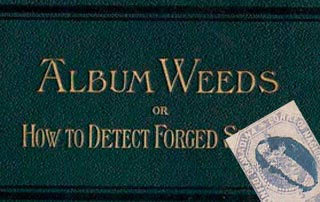
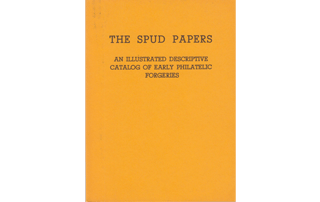



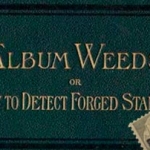
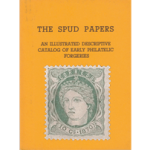
Leave a Reply
Want to join the discussion?Feel free to contribute!